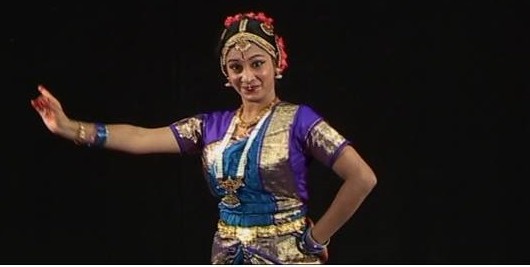What is the best gift we can give ourselves? Find out here!

I have not always known that I was the silent type. When I was growing up in Edmonton as a young child, I was surrounded by a myriad of wonderful people who shared exciting and meaningful moments with me. But, the people around me, whether in school, at home, or among peers, all encouraged the quality of being “outgoing”. Talking a lot, laughing a lot, engaging in various forms of self-expression, having many friends, and doing many activities, were all valued. Those peers who were considered shy or quiet were not viewed as measuring up to the more extroverted children in any given space. There was a lot of judgment surrounding the shy, quiet child, without really stopping to ask why they were expressing themselves in that way. They were labeled as being bad communicators, having low self-esteem, and lacking creativity. With the knowledge I have now I recognize that many quiet children are not shy or lacking in any self-esteem; they are just listening and observing the world around them differently.
Over time, as I grew up, I recognized my draw towards speaking less and listening and observing more. As someone who loves to write and to create, I find that I am not able to express myself fully unless I pay attention to what is going around me and listen to what my inner voice directs. In those times that I do not listen (whether by choice or by circumstance), I end up making decisions that really do not serve me nor others. I have learned this the hard way and have experienced much pain in not listening to my inner voice(s).
I can certainly be as extroverted as I need to be in any situation; I have been a lawyer who advocates for others and at times even a social butterfly. But at heart, I am a true introvert. I love being alone, living on my own, taking previous time to read, write, meditate, practice yoga, and listen to the birds chirp outside in the trees. And I realized after many years of listening to the incessant chatter in my head and with others in the world, that I not only prefer to be introverted, but I also love and truly appreciate the experience of silence.
To me, to be silent means to not speak with others, to not speak to oneself, and to not be focused on “doing” anything at all. It can include mindful contemplation, meditation, reflection, relaxation, walking, and gentle movement. To be silent means to listen to one’s thoughts, feelings, and actions, and to pay attention to what is happening inwardly, and to be fully focused on this sacred act.
Just the very description of this form of silence may cause a person a whole bunch of anxiety. One of the most common concerns I have heard from my friends and loved ones when we discuss silence is that individuals are scared of what voices may arise within them if they just stop to listen. The voices in our heads may not tell us what we want to hear if we play close attention. But, these voices are necessary.
There is a wonderful quotation by the wise Vietnamese monk, Thich Nhat Hanh, that captures a key intention of silence beautifully:
“We can’t find the peace of silence without stopping. Running faster and faster, pushing ourselves harder, will never bring it within our reach. We won’t find it anywhere but here. The moment we’re able to really stop, both the movement and the internal noise, we begin to find a healing silence. Silence is not a deprivation, an empty void. The more space we make for stillness and silence, the more we have to give both to ourselves and to others.” (taken from the book Silence: The Power of Quiet in a World Full of Noise, by Thich Nhat Hanh)
In the Winter of 2010 I was in the process of seeking out this idea of “healing silence” in my life after suffering a horrible loss that was causing me a great deal of grief. I decided to attend a 10 day silence retreat in the Vipassana meditation tradition. The retreat centre was located in a place called Egbert, Ontario, near the City of Barrie, and this centre offered 10 and 20 day meditation retreats all year round.
I was required to put in an application to attend the retreat. The application form asked that I attest to the fact that I was willing to abide by the Code of Discipline and the schedule that they offered and that I did not have any serious emotional or psychological impairments that would impact my ability to experience the retreat. I also had to apply to attend the retreat several months in advance because, believe it or not, there are plenty of people out there in the world who are craving to experience 10 days of silence.
Once I was accepted into the retreat, I prepared myself mentally to be silent for 10 days. I knew that I was not allowed to bring any reading material, journals, pens/pencils, or my cell phone, and that I would be cut off from the outside world for the duration of the retreat. I knew I would not be able to do any yoga or exercise, which is something that concerned me, but I was willing to give it a try. I informed friends and family not to contact me for 10 days, and I packed a pile of warm, comfortable clothing to meditate in along with cozy shawls and blankets. I was ready for silence.
The retreat schedule was intense. Our days ran from 4:30AM to 9:30PM, and for most of those hours we were seated in meditation. I discovered that the physical body truly dislikes being in the same position for hours on end! I experienced more physical discomfort in those 10 days than I had in my entire adult life. I learned that there were parts of my body that were crying out for relief and relaxation, and that I was stiff and unmoving in many parts of myself. At times, the pain was excruciating, but the meditation practice helped to pull me through.
Our only breaks during the days full of meditation were for light meals, to clean our rooms, to shower/bathe, and for a short walk outside. Every evening the highlight for us all was to be able to watch a short video of a discourse by S.N. Goenka, the Vipassana meditator who took it upon himself to share the ancient meditation technique with as many people as possible. He used humorous anecdotes and his own personal life experience to share the deep connection between what we were doing in silence and how it would help us in the world. These discourse sessions were a relief from looking inward deeply; as a community, we laughed with one another in silence.
For the duration of the retreat we were not to speak to anyone around us, and were not even to look at others directly or to make eye contact. For those 10 days we had absolutely no social obligations to anyone. Males sat on one side of the meditation hall and ate meals in a separate room from the females. We were all served by the amazing Vipassana retreat volunteers and didn’t have to do much other than focus on our own experience. It was akin to living like a nun or a monk for 10 days. We were encouraged to follow a Code of Discipline requiring us to abstain from killing, lying, stealing, sexual activity, and intoxicants. All of the retreat requirements functioned as a form of purification and detoxification that was completely complimentary to keeping silence in order to discover the blockages in our own experience.
Ultimately, the goal of the retreat was to experience a meditation technique that is allegedly the same one that the Buddha used in order to free himself from suffering and reach enlightenment. While in silence, we followed a meditation technique that guided us to pay close attention to our physical sensations in our bodies, and to scan our bodies with awareness and detachment. The message was that our lives are simply an ongoing bundle of sensations, and that these sensations rise and pass, and that if we are able to detach ourselves from cravings and aversions, we can free our minds from suffering.
Anicca, a Pali word used by the Buddha, means impermanence. One of the main goals of life, according to the Buddha, is to come to the deep realization that life itself is impermanent. And we can only realize this if we are silent, and not steeped neck deep in our busy lives. There were moments during the retreat that this concept was very clear to me, and a sense of peace was inevitable at those times. After being silent for 10 days I actually found it difficult to start speaking again. There were those in my group who were just waiting to speak about their experience, to share it with others, and to connect again. In my experience, it took much longer to come down from my space of silence. I wanted to stay silent for longer, and even opening my mouth to speak was a challenge. But, eventually, of course, I spoke, and then I got back into the swing of life.
But, I took with me from that retreat the gift of silence, and the desire to incorporate silence into my day to day life. This meant, taking time for myself to just be, and to not feel the pressure of social obligation or societal pressure to keep doing more and more. Simple tasks such as eating with mindfulness (instead of watching television or speaking throughout a meal), taking moments in the day to close my eyes and breathe, going for a lunch hour walk by myself when at work, doing a short 5 minute candle meditation, and reading before bed instead of spending hours on the computer or on the phone, are all ways to incorporate silence into my day. And from this silence I find more clarity and peace to balance out the chaos of my life.
Really, one does not have to go on a 10 day silence retreat in order to begin to experience silence in life. A simple commitment of 5 minutes per day to start, just to be with oneself, is all it takes to start a practice. You can close your eyes and listen to your breath, or stare at a candle flame, or notice the different sensations in your physical body, go for a short walk among the trees, or watch the way an emotion unfolds inside of you. There are so many ways to be silent, but they all help us to listen to ourselves.
In her novel Itsuka, Joy Kogawa says it beautifully:
Too much the world intrudes upon our listening. But patience, you will be told what you are made ready to hear.
And that is often the simple thing we are all looking for when we are silent: that wisdom and guidance that tells us which way to go, how to follow our dreams, and how to expand our experience of life. If we take the opportunity to be silent, and to listen, we can find our way.





